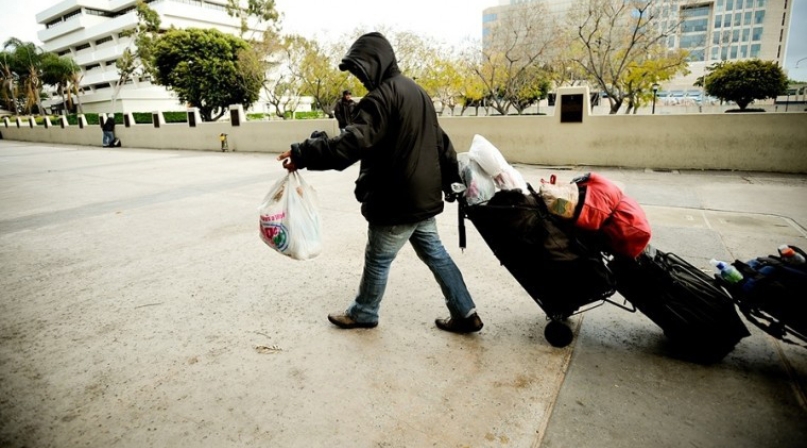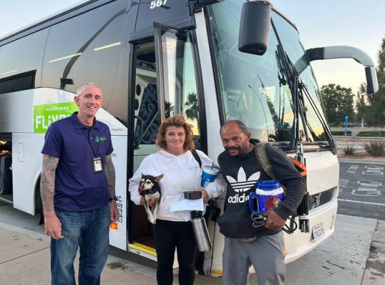Ending homelessness takes slow and steady progress
Upcoming Events
Related News

Homelessness has been dropping, but challenges remain for counties who serve the population
Last year this time, hundreds of vulnerable residents in Milwaukee County, Wis. spent their holidays in shelters or on the streets.
This year, according to County Executive Chris Abele, almost 200 of those people have a place of their own, thanks to the county Housing Division’s initiative to end chronic homelessness.
Terms to know
Federal Categories of Homelessness
There are four, federally defined categories under which individuals and families might qualify as homeless:
1. Literally homeless
2. Imminent risk of homelessness
3. Homeless under other federal statutes, and
4. Fleeing or attempting to flee domestic violence.
Home Emergency Shelter
Short-term shelter from the elements, with food and medical attention provided.
A total of 1,536 counties have at least one emergency shelter bed.
Rapid Re-housing
Rapid re-housing is an intervention, informed by a “Housing First” approach that is a critical part of a community’s effective homeless crisis response system. Rapid re-housing quickly connects families and individuals experiencing homelessness to permanent housing through a tailored package of assistance that may include the use of time-limited financial assistance and targeted supportive services.
Rapid re-housing capacity is expanding dramatically. According to the National Alliance to End Homelessness, the latest available figures as of 2015 show a one-year increase (2014–2015) of 59.6 percent and a 204 percent increase 2013–2015.
Transitional Housing
HUD defines the term transitional housing as “a project that is designed to provide housing and appropriate supportive services to homeless persons to facilitate movement to independent living. The housing is short-term, typically less than 24 months. In addition to providing safe housing for those in need, other services are available to help participants become self-sufficient.
A shift away from Transitional Housing began to be seen in 2013.
Permanent Supportive Housing
According to the U.S. Interagency Council on Homelessness, supportive housing is an evidence-based housing intervention that combines non-time-limited affordable housing assistance with wrap-around supportive services for people experiencing homelessness, as well as other people with disabilities.
Functional Zero
A term most associated with measuring homelessness among veterans. At any point in time, the number of veterans experiencing sheltered and unsheltered homelessness in a community will be no greater than the average monthly housing placement rate for veterans experiencing homelessness in that community.
In other words, a community that reaches functional zero never has more veterans experiencing homelessness than it can house in an average month.
Affordable Housing
(HUD definition)
Housing that costs no more than 30 percent of a family’s income. HUD defines anyone paying more than 30 percent for housing as “cost burdened.”
At the White House last month, Abele and other local elected officials from around the country shared with each other “what’s working” in their communities to alleviate homelessness.
“The people I talked to share my enthusiasm for providing resources … that embrace human dignity and diversity,” he told County News.
Through coordinated federal, state and local efforts, homelessness is abating. But Mikkel Beckmen, director of Hennepin County, Minn.’s Office to End Homelessness, lays some of the blame for past increases on old federal policy, “the disinvestment in public housing and some of the programs that make housing more affordable for low-income renters.”
Nationwide, on a single night in January 2015, some 565,000 Americans were homeless — sleeping outside, in shelters or in transitional housing, according to the National Alliance to End Homelessness. But that number has been decreasing steadily — if slowly — over the past several years. The national rate of homelessness in 2015 fell to 17.7 people per 10,000 in the general population from 18.3 in 2014.
One major success story of rehousing the homeless has been the elimination of veteran homelessness in several counties and cities across the country. In January, there were just under 40,000 homeless veterans reported nationwide, according to the National Coalition for Homeless Veterans. In 2010, there were 76,329. To date, three states and 33 communities have declared an end to veteran homelessness.
Vincent Weston bounced from shelter to shelter for much of 2015. Kicked out of his father’s house over a family dispute, he spent some of that time living on the streets of Hackensack, N.J., in Bergen County. “I really didn’t let nothing get me down,” he said, “because I kind of figured that there’s got to be a better way.” An Army veteran, he was fortunate to find himself an apartment, with the aid of the county’s Division of Veterans Services.
In June, Terrebone Parish, La. became the second jurisdiction in the state to effectively quash homelessnes. Having hit “functional zero,” Parish President Gordon Dove pledged to keep homelessness among veterans “rare, brief and non-recurring.”
While the needs of the homeless sub-populations may differ, there is one model that is succeeding where others have failed or had only modest success, and that’s “housing first.” It’s a strategy that works for the vast majority of homeless populations, experts say.
“Our Housing Division launched Housing First in Milwaukee last July with a goal to house 300 individuals by 2018,” Abele said. “This initiative focuses on the housing first concept — that a homeless individual or family’s first and primary need is to obtain stable housing. Other issues that affect the household are addressed once housing is obtained. National data shows this model provides very successful outcomes and dramatically reduces public service costs.”
Under the housing first model, issues such as an individual’s drug or alcohol abuse or unemployment are subsequently addressed with supportive, safety net services.
“And here in Milwaukee, it’s working,” Abele said. Since launching the “ending chronic homelessness,” initiative in July 2015, 170 chronically homeless people have found homes through housing first.
Ninety-nine percent of those individuals have remained in stable housing, and all are participating in voluntary case management services, he added.
Milwaukee County has almost 1 million residents — the kind of big-city population that many associate with homelessness. But suburban and rural counties are not immune to the problem.
The Department of Housing and Urban Development (HUD) estimates that of the more than half-a-million people who were homeless on any given night in 2015, 78,085 of them lived in rural areas.
Of those, 42 percent were people in families, while 11.6 percent were chronically homeless individuals.
Those data are likely an underestimate, according to a Housing Assistance Coalition report released earlier this year — since homeless censuses don’t count low-income people who are “doubled up” with other families or are in substandard housing. And the unsheltered homeless in rural America may be less likely to live on the streets.
In 2010, the Obama Administration launched Opening Doors, the first-ever federal strategic plan to prevent and end homelessness. Since then, overall homelessness is down by 10 percent, HUD Secretary Julian Castro said.
“We now know that ending homelessness is no longer a pipe dream. It’s achievable — and communities around the country have stepped up to prove it,” he said. “This has been made possible through unprecedented partnerships at the federal, state and local level as well as with the business community, nonprofits and philanthropy.
“On the issue of homelessness, it could be easy for a local official to not put it at the top of the priority list,” Castro said.
“But I’ve seen so many leaders step up to the challenge of ending homelessness — and the folks that put in the effort and follow best practices have often seen tremendous progress that benefits their entire community.”
Attachments
Related News

Insights from county leaders on the future of early childhood care and education
NACo's Prenatal-to-Three breakfast and listening session gathered county leaders to identify barriers, explore solutions and support local leaders advancing their priorities.

Team approach, website help California county tackle homelessness
Riverside County, Calif. created a multidisciplinary team to better and more efficiently serve its unsheltered population and share success stories and data through a website.

Ohio county boosts community youth programs with ARPA funding
Hamilton County, Ohio invested ARPA dollars in community organizations through the INSPIRE Youth initiative.